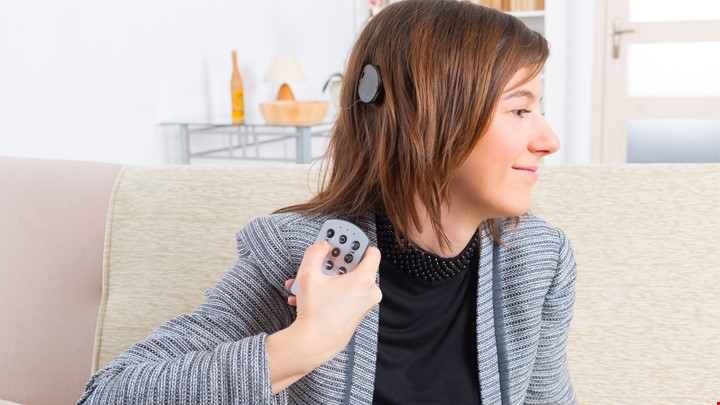Hearing loss bordering on deafness
How long does a hearing solution help, when a cochlear implant?
Hearing loss
Age-related hearing loss can lead to complete hearing loss. Hearing loss bordering on deafness can also be congenital or develop as a result of an illness or accident. How far do high-quality hearing solutions help here, and when is a cochlear implant superior to a hearing aid?

Degree of hearing loss
Hearing aids can compensate for a wide range of hearing losses. In most cases of hearing loss, the hearing threshold value is between 25 and 75 dB (hearing threshold value is the level at which a person perceives a sound; as hearing loss increases, it shifts to the higher decibel range). According to the classification by the World Health Organization (WHO), this refers to low-grade (26 - 40 dB, category 1), moderate-grade (41 - 60 dB, category 2) and profound hearing loss (61 - 80 dB, category 3).
In these three areas, the hearing impairments can still be compensated for with excellent technology. Sufficient amplification is achieved so that the acoustic impulse is perceived again, and the high-quality technology of the device can additionally restore the lost clarity and intensity to the sounds. Disturbing background noise is filtered out.
High-performance hearing solutions can amplify sounds by more than 75 dB, which means they are also suitable for people with hearing loss bordering on deafness. However, technical support for impaired hearing is only possible as long as the amplified impulses can still be processed by the auditory pathway and the sense of hearing. In WHO category 4 - hearing loss bordering on deafness with a hearing threshold value of more than 81 dB - this becomes increasingly difficult. Deafness begins at a hearing threshold of 120 dB.
Hearing solution or implant?
The answer to the question "hearing solution or cochlear implant" is provided by the hearing performance achieved: At the latest when the inner ear and the auditory pathway are damaged by age-related degeneration or external influences to such an extent that the impulses amplified by the hearing aid can no longer be processed sufficiently well and only insufficient speech understanding can be achieved with hearing aids, a cochlear implant is the remedy of choice. With a cochlear implant, an implanted medical device takes over the function of the damaged inner ear (Latin: cochlea) and transmits the audio signals to the nerves of the auditory pathway and to the brain instead of the no longer functioning hair cells.
These electronic signals are converted into digital data by a sound processor worn on the outside of the head or body. By means of a transmitter coil, they are then transmitted to the actual implant located under the skin. Subsequently, the digital signals are converted into electrical impulses that stimulate the auditory nerves and are transmitted to the brain. This is where the auditory perception then arises.
Close cooperation with the doctor
KIND hearing care professionals will always work with you and for you to find the best hearing solution. If they have been with you for a long time and know the development of your hearing loss, they can accurately assess by when hearing improvement with a KIND hearing solution is possible.
If a hearing loss bordering on deafness develops, the hearing care professional is already in contact with the attending specialist. Together, these two experts will then suggest the appropriate steps to take. A cochlear implant is only advised at a late stage, as it always represents a physical burden. However, it can restore almost lost hearing.
Discover other articles
- Smart Hearing: What intelligent hearing systems do
- The sooner an ENT specialist is consulted, the better
- Comfort to go: KINDvitalo
- Hearing loss and its causes
- Hearing aids while driving
- Optimized design for hearing solutions
- Meniere's disease
- Hearing test: Procedure and result
- Loud alone is not enough:
- Noise protection for the ears